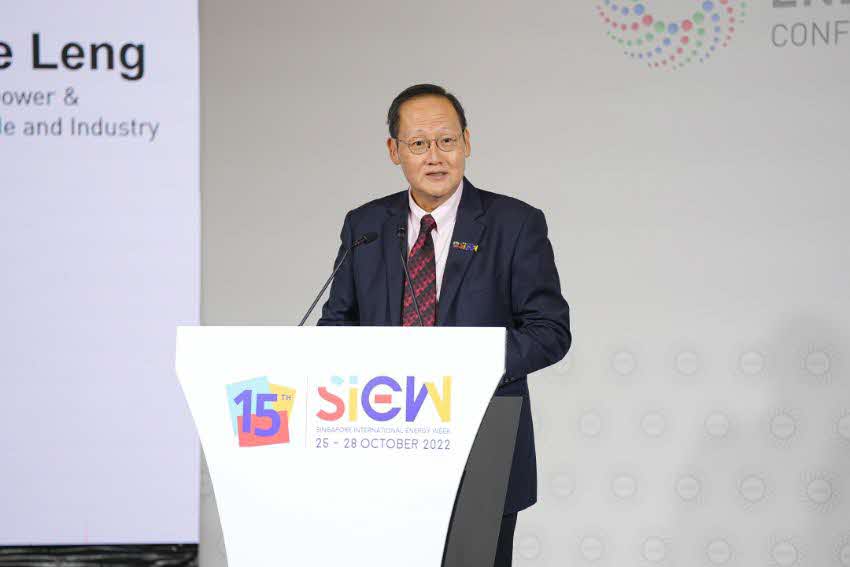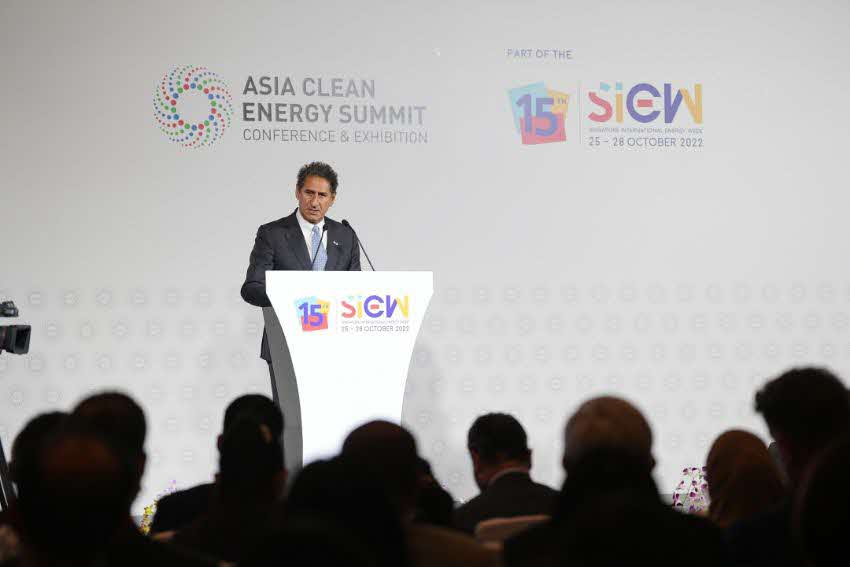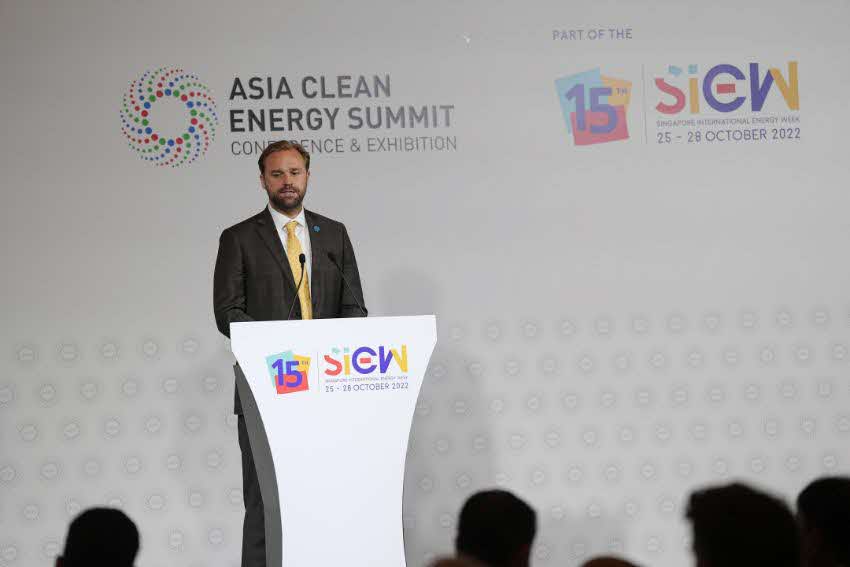
As the power sector transforms, Southeast Asia's shift to renewables is currently being tempered by unprecedented world events taking place. This has impacted the region's growing energy demands on all sides. At the same time, it has underscored the need to take a calibrated approach to balancing clean energy agendas with immediate near-term energy security.
Speaking at the 2nd Singapore-IRENA High-Level Forum on 26 October, Minister for Manpower and Second Minister for Trade and Industry, Dr Tan See Leng, noted that this is a pivotal moment for all amid a challenging energy landscape.
That said, he pointed out that Southeast Asia is a region blessed with renewable resources. It has the capability to scale up its share of renewable energy to 65%, and to reduce overall energy-related carbon emissions by 75%.
Dr Tan also emphasised the need to strengthen both domestic and regional collaborations as a vital step to balancing climate ambitions with energy security. He also iterated Singapore’s commitment towards the development of renewable energy projects both domestically and regionally.
Renewable energy projects on the home front
Dr Tan shared that Singapore is "pushing boundaries and exploring innovative ways" to enhance renewable energy deployment in the country. He cited the Keppel Infrastructure @ Changi Building which reopened last month. The facility was retrofitted with over 4,000 sqm of solar photovoltaic panels expected to yield about 600,000 kWh/year of renewable energy–double the building's energy consumption.
Dr Tan also acknowledged that it is essential to ensure the resilience of the grid along with introducing more renewables into the system. As such, Energy Storage Systems will not only address this challenge, but also mitigate solar energy's intermittency issues.
He shared about the installation of SembCorp Industries' 200MW ESS on Jurong Island. When the ESS goes operational by November 2022, this will be the largest deployment of its kind in Southeast Asia.
He lauded Singapore companies for their experience in deploying and maximising solar deployment across the country, as well as deploying supporting infrastructure like energy storage. This puts them in a good stead to work with international and regional partners on renewable energy development in the region.
One of these is the Agency for Science, Technology and Research (A*STAR) and Sun Cable. Both have entered into a Master Research Collaboration Agreement to, among other deliverables, advance green grid technology innovation and infrastructure planning.
In reiterating Singapore’s commitment to supporting Asia in its green energy transition, Dr Tan also announced the formation of a two-year Demand Response/Interruptible Load sandbox.
This will enable contestable consumers to optimise their energy consumption, underpinning Singapore's ongoing transition to lower carbon emissions as set out in the Singapore Green Plan 2030. He invited commercial and industrial consumers to participate in the sandbox to optimise their energy demand.

Centralised energy systems are no longer sustainable
In his Opening Address following Dr Tan's speech, Francesco La Camera, Director-General of the International Renewable Energy (IRENA), said: “2022 showed us that a centralised energy system based on fossil fuels is no longer sustainable.”
He shared that wide-scale investments are needed in Southeast Asia to attain the 1.5°C Paris Agreement Goal. As such, the region would need to see over US$5 trillion in investments over the period to 2050 to achieve a net zero future.
Mr La Camera said the world is currently at a crossroads on whether to continue to rely on fossil fuels or take a leap forward by investing in the energy transition. He declared the latter as a “no regret strategy” that will pay off in the future.
The Director-General echoed IRENA’s support in strengthening its partnership with Singapore and other members.

2nd ASEAN Outlook Report Presentation
Nicholas Wagner, Programme Officer, IRENA, also shared extracts from the 2nd ASEAN Outlook Report Presentation. The report outlined the region’s progress in the energy transition towards a net zero future by 2050. Among the highlights were that:
- The region can transition from just 19% renewable energy share.
- In the longer term, regional power integration should be improved to utilise total renewable energy of around 2,770 GW to 3,400 GW by 2050.
- Renewable power capacity, power grids and infrastructure, and enabling technologies will need to make up two-thirds of the total investment of US$6.3 - 7.3 trillion over the period to 2050.
- The 1.5°C pathway can reduce total costs related to energy supply by as much as US$160 billion cumulatively by 2050.
- Regional interconnection will be key to enabling a high share of renewables.
Follow us on Twitter (@SIEW_sg) to get the latest #SIEW2022 updates!